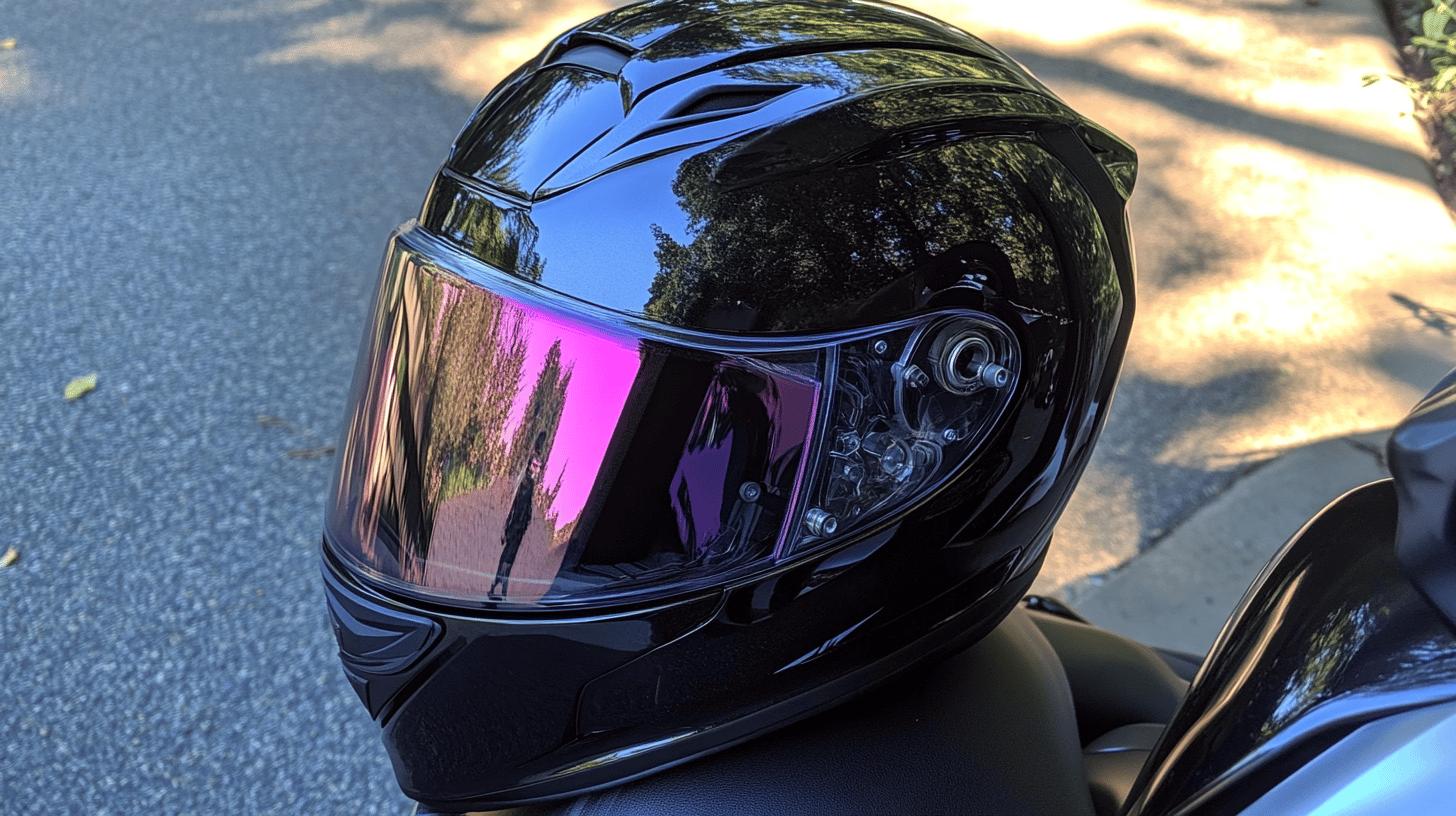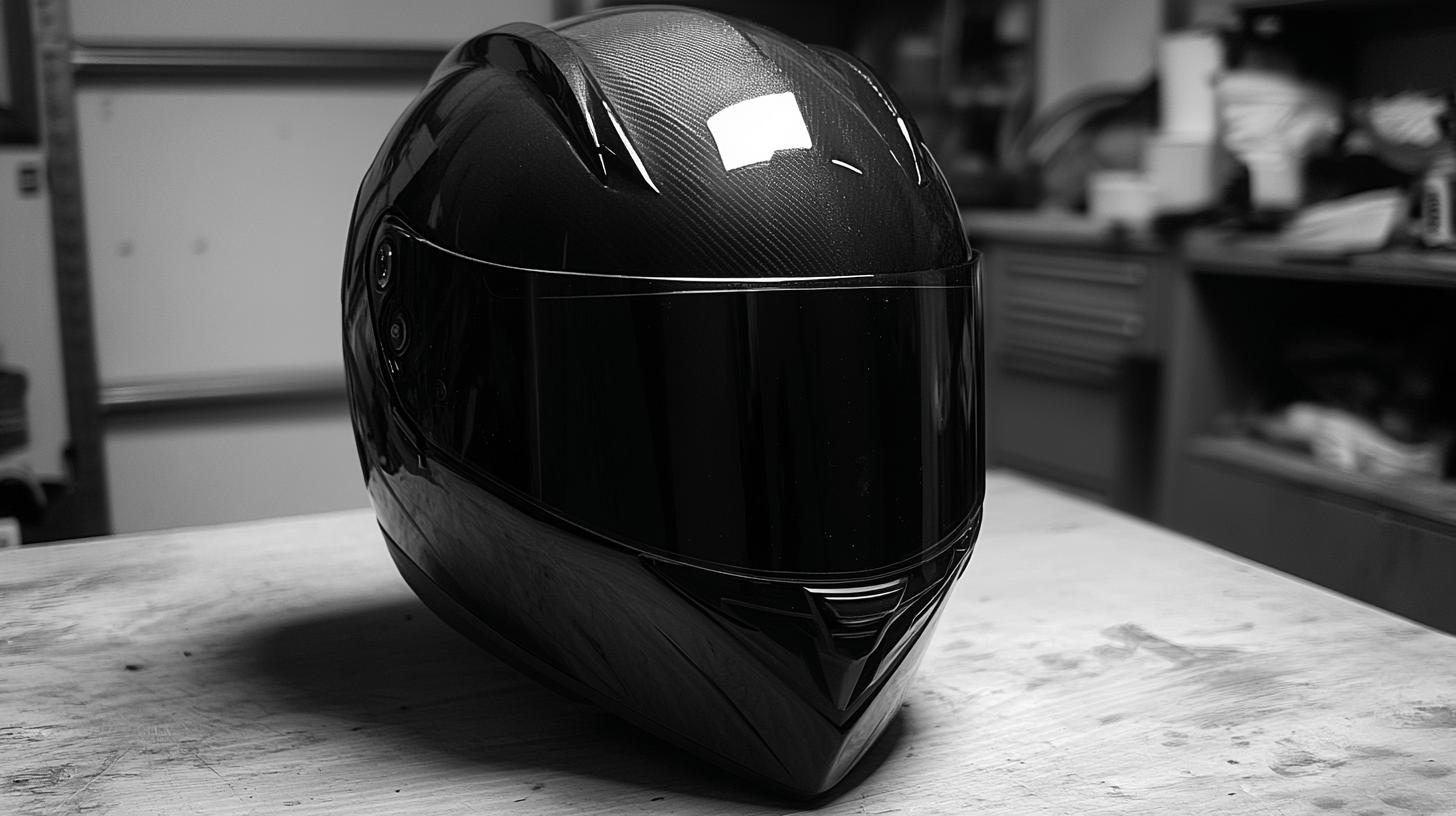Ever been caught squinting against the glaring sun while on the road? A dual visor motorcycle helmet might just be your solution. Blending the best of functionality and innovation, these helmets feature both a clear outer visor and a tinted inner visor, allowing riders to adjust to changing light conditions seamlessly.
This setup not only enhances visibility but also elevates safety and comfort. Riders searching for adaptable gear can unlock the potential of dual visors to enjoy effortless transitions between bright sunlight and dim environments, ensuring a safer and more enjoyable ride.
Understanding Dual Visor Motorcycle Helmets

A dual visor motorcycle helmet is designed with two distinct visors: a clear outer visor and a tinted inner visor. The clear outer visor serves as a shield against wind, debris, and rain, ensuring riders maintain a clear line of sight in various weather conditions.
The tinted inner visor acts like built-in sunglasses, providing essential sun protection. This inner visor can be adjusted using a simple lever or switch, allowing riders to quickly adapt to changing light conditions without needing to stop.
This dual system enhances both safety and comfort, offering a versatile solution for a wide range of riding environments.
-
Enhanced Visibility: Quickly adjust the visor for optimal visibility in changing light.
-
Sun Protection: The inner visor reduces glare and eye strain in bright conditions.
-
Convenience: No need to carry extra sunglasses or change visors mid-ride.
-
Versatility: Suitable for both daytime and nighttime riding.
-
Ease of Use: Simple mechanisms allow for seamless operation while riding.
The adaptability of dual visor helmets makes them particularly appealing to riders who frequently encounter varied lighting conditions. This feature allows for a seamless transition between bright sunlight and shaded areas, providing continuous comfort and protection.
The convenience of this system is a significant advantage, making it a favored choice among commuting riders and those embarking on long-distance journeys.
Benefits of Dual Visor Systems

The dual visor system in motorcycle helmets significantly enhances visibility and sun protection for riders. By incorporating a clear outer visor and a tinted inner visor, these helmets allow riders to maintain optimal visibility in varying lighting conditions.
The outer visor provides protection against wind, debris, and rain, while the inner visor acts as a sun shield, reducing glare and eye strain. This design is particularly beneficial during long rides where lighting can change frequently, ensuring that riders don't have to stop to adjust their gear for better visibility.
-
Reduces Glare: The tinted inner visor minimizes glare from the sun, enhancing visual clarity.
-
Easy Adjustments: Riders can quickly switch the inner visor up or down, adapting to light changes on the go.
-
Comfort Over Long Rides: Maintains consistent eye comfort, reducing fatigue during extended trips.
-
Wind Protection: The outer visor shields against wind, contributing to a more comfortable ride.
-
Debris and Rain Defense: Keeps the rider's face protected from road debris and rain, maintaining clear sightlines.
-
Versatile Use: Suitable for diverse riding conditions, from bright sunlight to overcast skies.
For those who embark on long-distance journeys or commute regularly, the convenience of the dual visor system is a notable advantage. Riders can effortlessly adapt to changing light conditions without needing to stop, allowing for uninterrupted travel.
This adaptability not only enhances rider comfort but also contributes to overall safety, making dual visor helmets a preferred choice among motorcyclists who value practicality and protection.
Types of Helmets with Dual Visor Features

Dual visor helmets are available in several styles, catering to a range of rider preferences and situations. The three primary types of dual visor helmets are full-face, modular, and open-face designs.
Each offers distinct advantages that suit different riding needs, whether you prioritize comprehensive protection, flexibility, or urban convenience. The price range for these helmets typically spans from $100 to $500, reflecting variations in materials and technological features.
Full-Face Helmets
Full-face helmets with dual visors provide comprehensive protection, covering the entire head and face. These helmets are favored by riders who prioritize safety, as they offer maximum coverage and protection against impacts, debris, and weather conditions.
Equipped with both a clear outer visor and a retractable tinted inner visor, full-face helmets allow for seamless adaptation to changing light conditions. This versatility makes them suitable for a variety of riding environments, from highways to off-road trails.
Modular Helmets
Modular helmets, also known as flip-up helmets, offer flexibility by combining the features of full-face and open-face designs. The chin bar of a modular helmet can be lifted, allowing riders to switch between a full-face and open-face configuration without removing the helmet.
This convenience is ideal for riders who frequently transition between highway and city riding. The dual visor system in modular helmets enhances this adaptability, providing sun protection and clear visibility in one package.
Open-Face Helmets
Open-face helmets with dual visors are popular among urban riders who value the feeling of openness and ease of communication. While they lack the full coverage of their full-face counterparts, they still offer significant protection to the top, sides, and back of the head.
The dual visor feature in open-face helmets is particularly beneficial for city commuting, as it allows riders to manage sunlight and maintain clear vision without sacrificing the convenience of an open design.
| Helmet Type | Features | Price Range |
|---|---|---|
| Full-Face | Comprehensive protection, versatile for various rides | $150-$500 |
| Modular | Flexible, combines full-face and open-face benefits | $200-$500 |
| Open-Face | Ideal for urban riders, offers open design convenience | $100-$300 |
Safety Standards and Considerations

What are the safety standards for dual visor motorcycle helmets? Dual visor helmets must meet similar safety standards as single visor helmets, often achieving certifications such as DOT (Department of Transportation), ECE (Economic Commission for Europe), or Snell.
These certifications ensure that helmets adhere to strict guidelines for impact absorption, penetration resistance, and retention system effectiveness. Helmets bearing these marks are tested for their ability to protect the rider's head in the event of an accident, offering peace of mind that they meet recognized safety benchmarks.
-
Impact Protection: Designed to absorb and dissipate energy during a crash.
-
Penetration Resistance: Tested to prevent sharp objects from piercing the helmet.
-
Retention System: Assessed to ensure the helmet remains securely fastened.
-
Certification Marks: Look for DOT, ECE, or Snell labels indicating passed safety tests.
-
Field of Vision: Ensures the helmet allows adequate peripheral vision for rider awareness.
Certified helmets significantly enhance rider safety by providing verified protection levels. Why is choosing a certified helmet crucial? Helmets that meet or exceed safety standards have undergone rigorous testing to ensure they perform effectively under stress.
This guarantees the helmet can protect against head injuries, a critical factor in reducing the severity of accidents. Riders should prioritize helmets with proper certifications to ensure maximum safety, making informed choices based on the safety features and standards met by the helmet.
Maintenance and Care for Dual Visor Helmets

Dual visor helmets demand dedicated maintenance to preserve their functionality and longevity. Regular cleaning of both the outer and inner visors is essential to maintain clear visibility. The outer visor is usually straightforward to clean, while the inner visor may require more careful handling due to its placement and mechanism.
Ensuring that the visor mechanism remains free of debris and operates smoothly is crucial, as dirt buildup can impede its function, affecting the ease of adjusting the visors. Routine checks for wear and tear on the moving parts of the visor system will help identify potential issues early.
-
Use a microfiber cloth to gently clean both visors, avoiding abrasive materials that can scratch surfaces.
-
Apply a mild soapy solution to remove stubborn dirt or smudges, rinsing thoroughly to prevent residue.
-
Regularly inspect the visor mechanism for smooth operation, lubricating as needed with a silicone-based lubricant.
- Check for any cracks or damage to the visors, replacing them promptly to maintain safety standards.
Regularly checking the visor mechanism ensures it remains functional and safe. If the visors show signs of wear, such as scratches or reduced clarity, they should be replaced to maintain optimal visibility. Properly maintained dual visor helmets not only extend the life of the equipment but also enhance the safety and comfort of the rider.
Final Words
Exploring the world of dual visor motorcycle helmets reveals a design focused on adaptability and safety. By incorporating a clear outer visor and a tinted inner visor, these helmets cater to varied lighting conditions, enhancing rider comfort and protection.
With diverse helmet styles like full-face, modular, and open-face options, and adherence to strict safety standards, riders can choose based on personal preference. Understanding what a dual visor motorcycle helmet offers can significantly enrich the riding experience, blending convenience with security.
FAQ
What is a dual visor motorcycle helmet DOT approved?
A dual visor motorcycle helmet DOT approved signifies compliance with the Department of Transportation's safety standards, ensuring reliable impact protection and safety for riders.
What is a dual visor motorcycle helmet Honda?
A dual visor motorcycle helmet Honda is a helmet designed by Honda that features a dual visor system, offering riders enhanced protection and sun shielding.
What is a dual visor motorcycle helmet DOT?
A dual visor motorcycle helmet DOT has two visors and meets Department of Transportation standards, providing safety and adaptability for various light conditions.
Single visor vs dual visor helmet?
A dual visor helmet offers both clear and tinted visors for versatile light protection, while a single visor helmet typically includes only one visor, limiting adaptability.
What is a modular helmet?
A modular helmet blends the features of full-face and open-face helmets, providing flexibility to flip up the chin bar or visor for various riding conditions.
Dual Visor Helmet with Bluetooth?
A dual visor helmet with Bluetooth integrates communication technology, allowing riders to connect devices for hands-free calls, music, or navigation.
Motorcycle helmet with retractable visor?
A motorcycle helmet with a retractable visor features an internal visor that can be adjusted without removing the helmet, enhancing convenience and safety.
Dual Visor Full Face Helmet?
A dual visor full-face helmet completely encloses the head for maximum protection while featuring dual visors for light adaptability.
What is the purpose of a dual visor helmet?
A dual visor helmet provides protection from sunlight with a tinted visor and clear vision with a standard visor, enhancing safety and comfort.
What is the point of a dual sport helmet?
A dual sport helmet is designed for on-road and off-road use, combining elements of street and dirt helmets for versatile performance.
Why do motorcycle cops wear half helmets?
Motorcycle cops wear half helmets for increased hearing awareness and ease of communication while maintaining some level of head protection.
What is a single visor helmet?
A single visor helmet includes only one clear or tinted visor, providing basic eye protection and weather shielding without dual visor adaptability.

Brad Mitchell is a seasoned motorcycle enthusiast with over 16 years of riding experience. He’s spent countless hours on the open road, particularly favoring scenic routes aboard his trusted Harley-Davidson. Brad’s laid-back approach to life and riding gives him a unique perspective on motorcycle gear and safety, which he shares through his in-depth reviews and expert advice on ProtectiveGearz.



